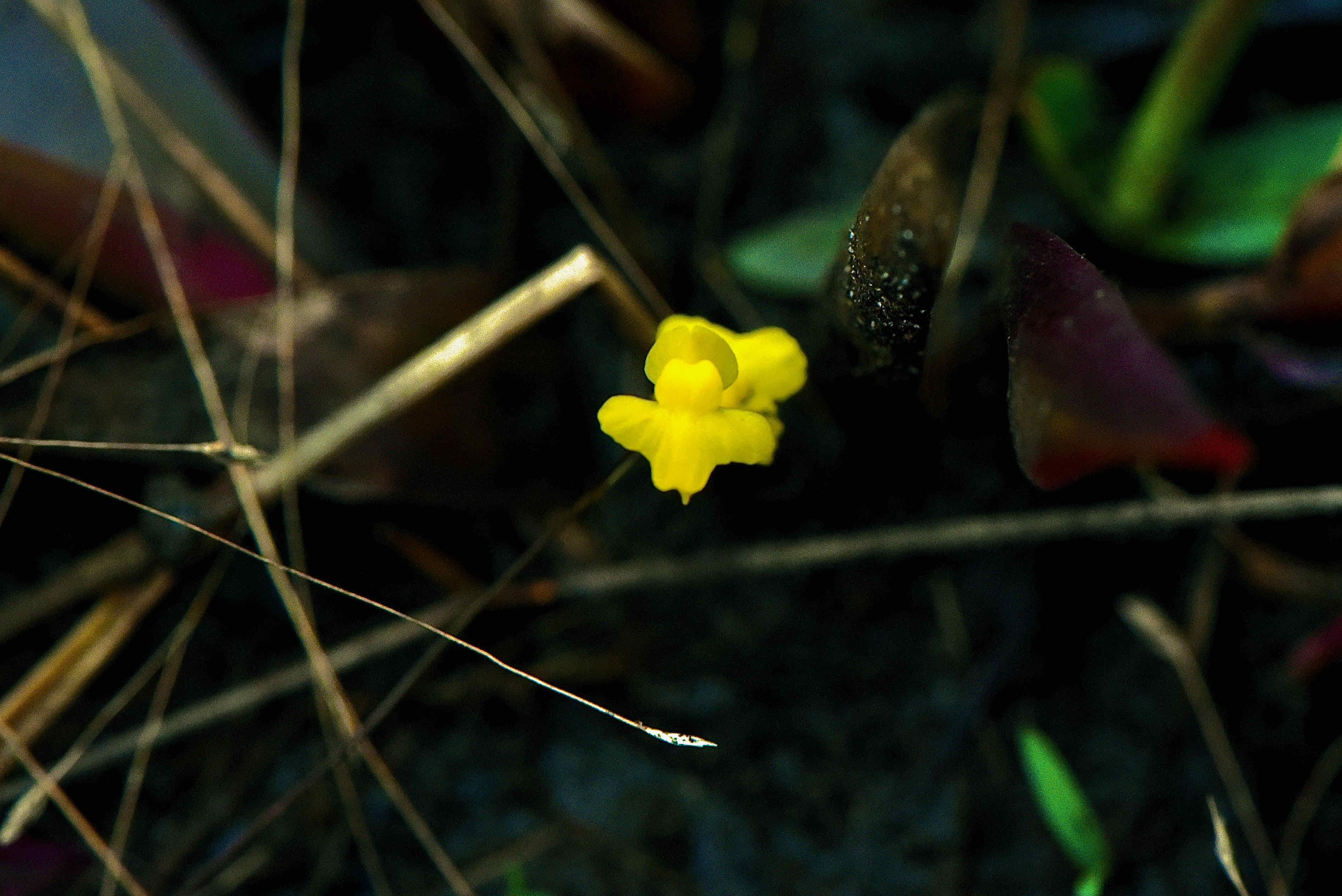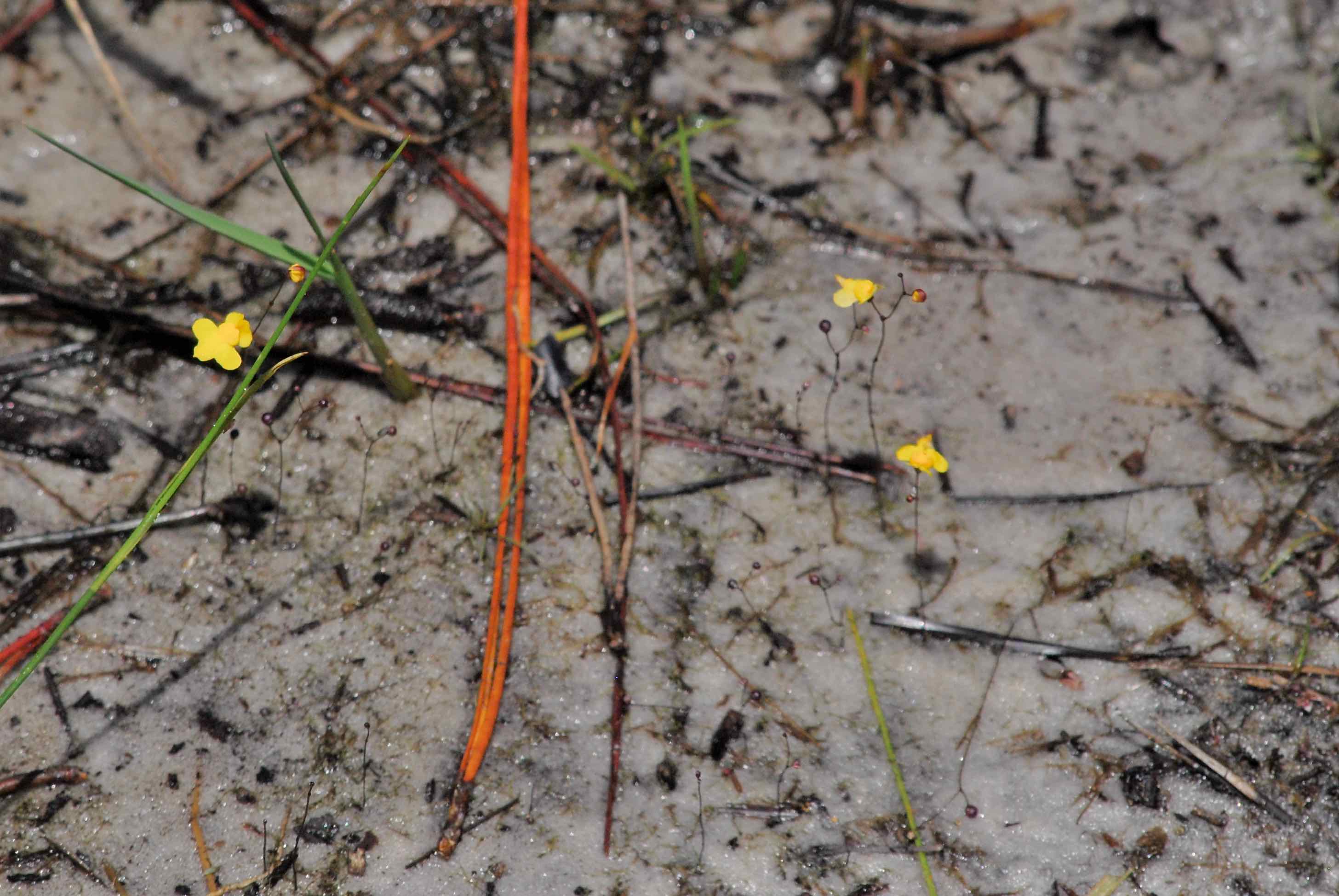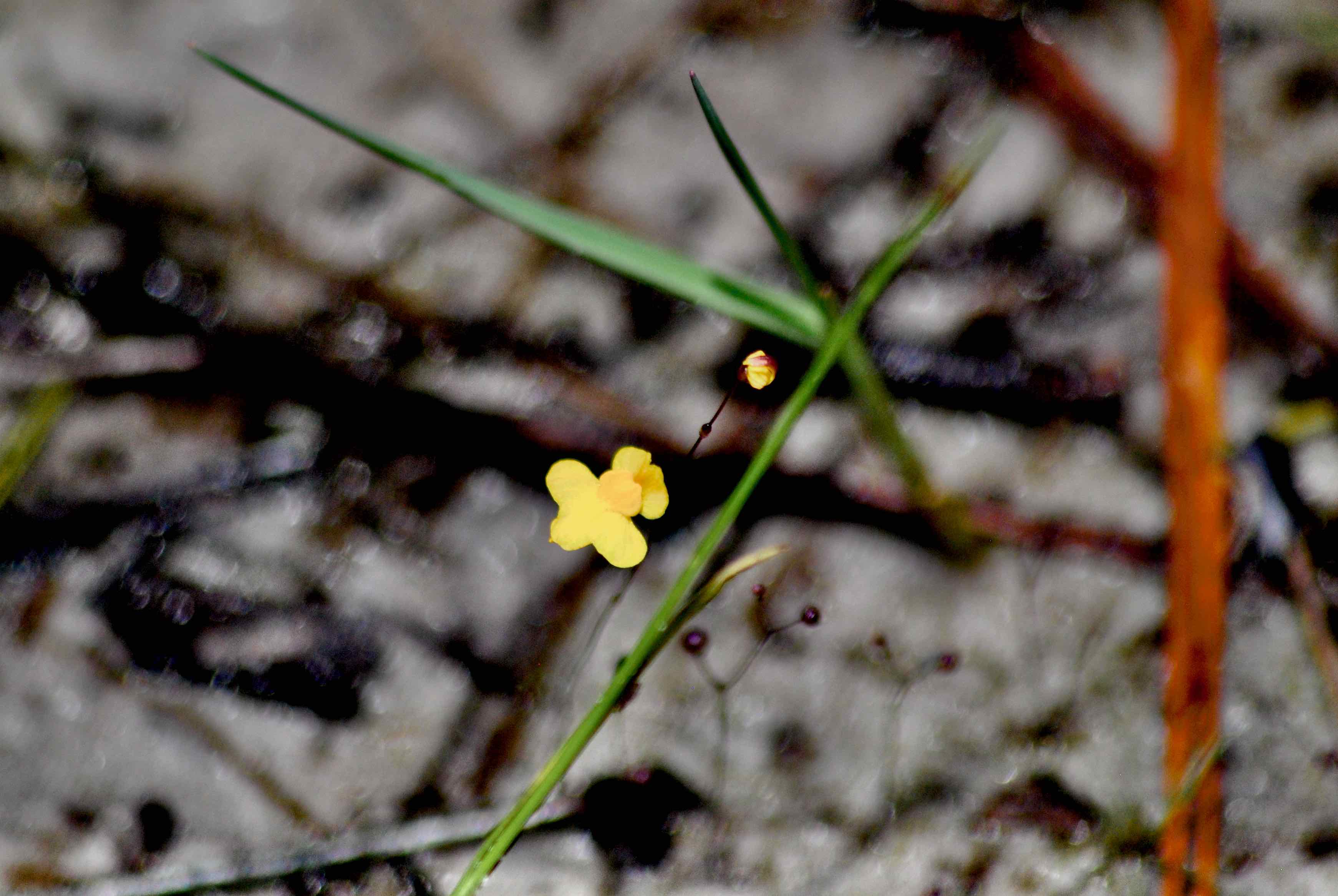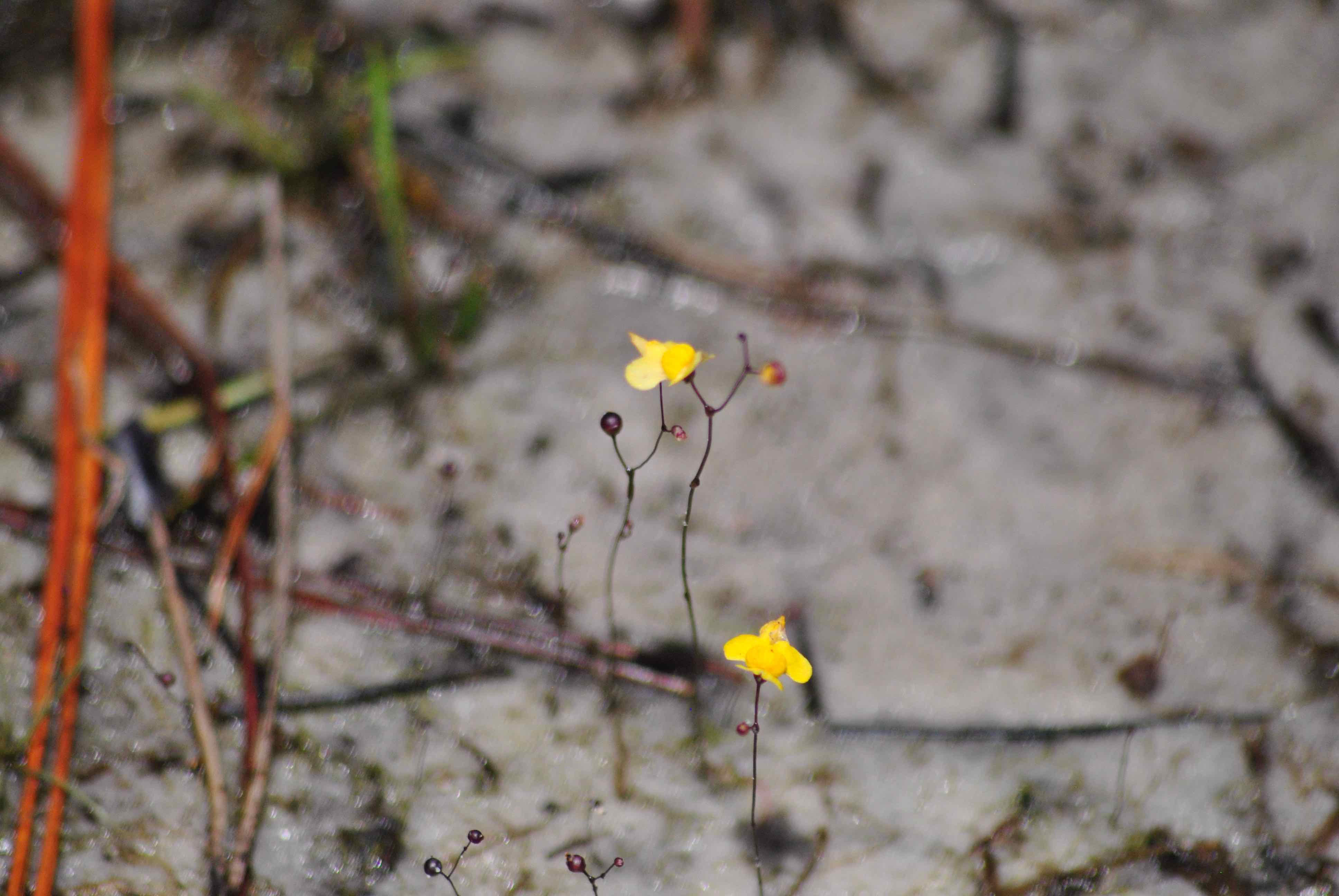
Zigzag bladderwort, photographed at Loxahatchee Slough Natural Area, Palm Beach Gardens, Palm Beach County, in December 2021.
Zigzag bladderwort, Utricularia subulata, is a killer, albeit a tiny one. On a good day it might reach an inch off the ground, and without its bright yellow flowers, it's nearly impossible to see, let alone identify. But yes, zigzag bladderwort is a carnivore. It also is the smallest of all yellow-flowered bladderworts and has the greatest geographic range of any members of its genus.
Zigzag bladderwort is a Florida native found in most of the state's 67 counties. The one notable exception in South Florida: Monroe. It's also found throughout the Southeast, up the Atlantic Coast as far north as New York and Massachusetts and into Nova Scotia. All though the concentration of its population is in coastal states, it's also found in a few places in the interior of the continent, including Michigan and Indiana, clustered along Lake Michigan. Zigzag bladderwort grows in California, but there is some disagreement over its native status there. It's so inconspicuous that it presence in Michigan wasn't detected until 1986.
Zigzag bladderwort is a perennial that grows in wet, sandy areas. We found the plant above growing in a deeply rutted, muddy road in Loxahatchee Slough Natural Area. We've seen plants growing along the banks of a canal in the Hungryland Slough Natural Area and along a small stream in Atlantic Ridge Preserve. Also growing nearby the Atlantic Ridge site: pink sundew, another carnivore.
The stem on zigzag bladderwort is wire-thin, almost like the filament of an incandescent light bulb (remember those?). Up north, the plant forms an underground bud in winter, then flowers in late summer. In between, it's nearly impossible to detect. In South Florida, the plant flowers as early as spring. If conditions are right, zigzag will send out the bright yellow blooms. If not, the plant will send out a closed flower that is cleistogamous, or self-pollinating. The full blooms are chasmogamous, open-pollinating, requiring bugs to pass its genetic material around. This allows for genetic diversity in the species, which in turn improves the odds for long-term survival of the species. Our science lesson for the day.
While we're at it, we might as well mention here that there is a population in three counties in Michigan in which the flowers do not ever open. Some consider it a subspecies, U subulata var. cleistogama, or even a species unto itself, U cleistogama.
Although zigzag bladderwort is a carnivore, a bug trying to pollinate it isn't in any danger of being devoured. No, the killer parts are tiny — microscopic, in fact — bladders found attached to a slender underground stem, or stolon. The bladders trap and digest equally tiny organisms found in the soil. Zigzag grows in nutrient-poor soils, so this helps the plant overcome "dietary" deficiencies it might have. Think of it like taking a supplement. By the way, the stolons zigzag, apparently the inspiration for the name.
Delray's Institute for Regional Conservation considers zigzag bladderwort rare in South Florida but it is not legally protected by either state or federal governments. It is listed as endangered in Indiana, threatened in Tennessee and Michigan, of special concern in Rhode Island and Massachusetts and rare in Nova Scotia and New York.
Zigzag bladderwort is a member of Lentibulariaceae, the bladderwort family. Another name: tiny bladderwort, and appropriately so.
Click on photo for larger image
Links for Zigzag Bladderwort



